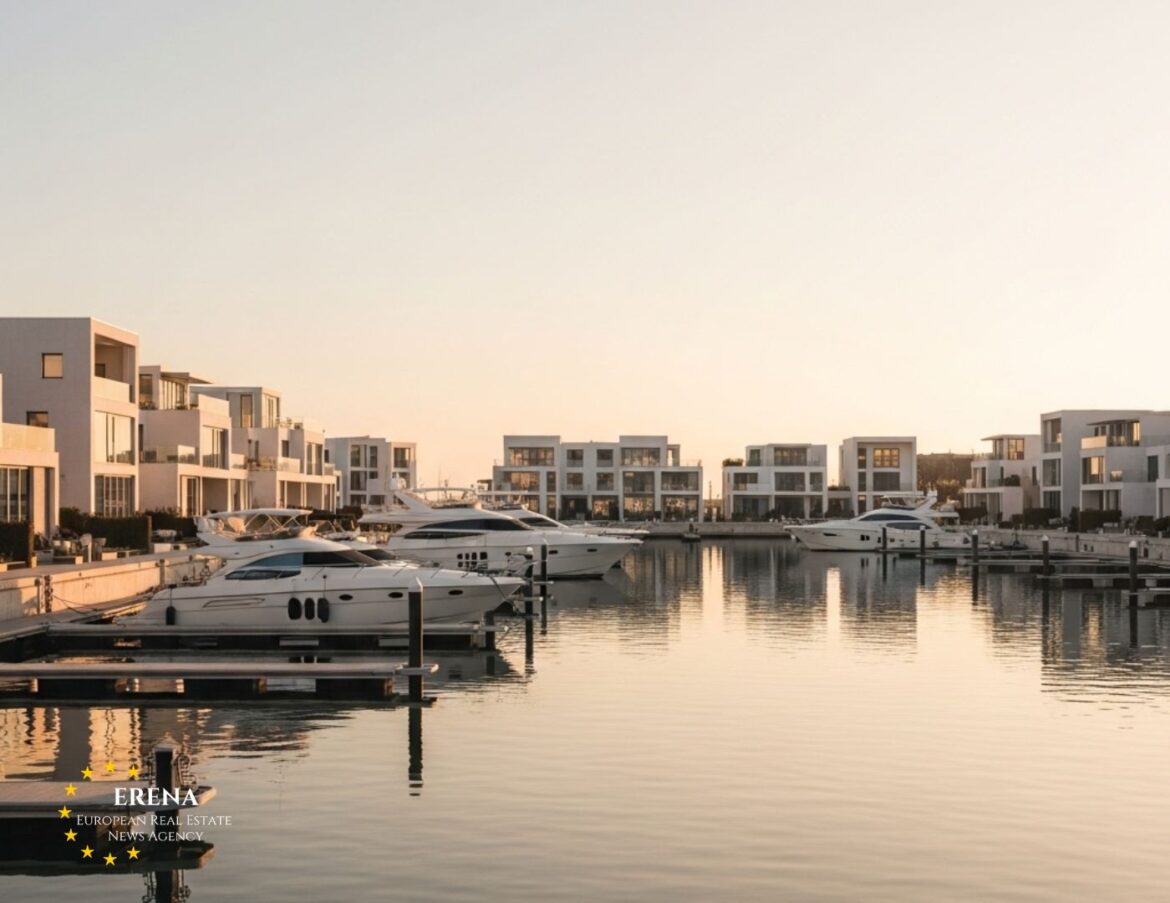In the world of real estate, investors typically focus on familiar segments: residential, office, and retail properties. However, there is a niche market that remains under the radar for many but holds immense potential — marina investments, or infrastructure developed for docking and servicing yachts. In 2025, marinas are evolving from mere logistical hubs into prestigious, high-yield assets attracting growing international interest.
What Makes Marinas Unique and Attractive?
A marina is a coastal facility offering docking and services for yachts and boats. Often, it includes supplementary amenities such as restaurants, shops, hotels, clubs, and residential properties. Unlike commercial ports, marinas are designed for comfort, exclusivity, and luxury.
This makes them particularly appealing to affluent yacht owners, tenants, tourists, and, of course, investors. Revenue streams are diversified — docking fees, maintenance services, rental of retail space, and sales of adjacent real estate.
Market Dynamics and Growth
According to the European ICOMIA association, the number of registered leisure vessels in Europe increased by 12% from 2018 to 2024. Meanwhile, high-end marina berths remain in short supply — particularly in sought-after Mediterranean destinations such as Monaco, Costa Brava, Nice, Portofino, and Istria.
The average annual cost to dock a 15-meter yacht in a prime marina in France or Italy ranges from €8,000 to €25,000, depending on season and location. In ultra-exclusive marinas like Porto Cervo in Sardinia, yearly rates can reach €100,000.
Investment Models
There are several ways to invest in marina real estate:
- Buying shares in an operating marina, similar to commercial real estate investing, with returns generated from operational profits.
- Purchasing individual berths and renting them out.
- Investing in the development or renovation of marina facilities.
- Indirect investment via funds or REITs specializing in waterfront infrastructure.
Each model carries its own level of risk and return, but a common trend emerges: the more exclusive the location and the higher the berth scarcity, the more stable and profitable the investment.
Geographic Hotspots for Marina Investment
The Mediterranean is the undisputed leader. French Riviera, Spain, Croatia, and Greece are especially in demand.
– In Monte Carlo, demand is so high that marina spaces are often passed down through generations. Formal leases are rarely available on the open market.
– In Sotogrande, Spain, the marina is part of a larger development including apartments and a golf course. Waterfront units start at €450,000, while renting out a single berth can generate over €12,000 annually.
Scandinavia and the Baltic coast are also gaining popularity, driven by rising interest in yachting among affluent residents of Germany, the Netherlands, and Sweden.
– Marinas in Helsinki, Stockholm, and Tallinn offer a mix of nautical infrastructure and elegant waterfront living.
The Middle East and Asia represent fast-emerging markets. In Dubai’s Palm Jumeirah, renting a berth for a superyacht can cost up to €60,000 per month, and luxury waterfront apartments start at €1.5 million.
Emerging Trends and Future Outlook
Sustainability-Driven Development
Modern marina projects are increasingly incorporating eco-friendly technologies — solar panels, water recycling systems, and electric boat charging stations. These features are attractive to ESG-conscious investors and help reduce operational costs.
Integration with Residential and Hospitality Projects
Many new marinas are part of mixed-use developments, where docking is just one component. This allows investors to tap into multiple revenue streams: berths, lodging, and retail leases.
Regulatory and Tax Incentives
Several countries now offer incentives for investing in coastal infrastructure, such as corporate tax relief, development subsidies, and streamlined approval processes.
Digitalization of Marina Operations
The growth of digital booking platforms and marina management apps (e.g., Dockwa, MyMarina) simplifies operations, improves customer experience, and reduces entry barriers for private investors.
Successful Investment Examples
- Marina Port Vell, Barcelona — once an industrial port, this site has been transformed into a luxury yacht hub. The redevelopment cost approximately €80 million, and its 2025 valuation exceeds €200 million.
- Porto Montenegro, Tivat, Montenegro — backed by global funds and private investors, this project blends a full-service marina with luxury housing, boutiques, and cultural venues. Returns on residential investments are around 5–6% annually, plus appreciation.
- Marina Punat, Croatia — a family-run business that evolved into a top-performing marina and was later acquired by an investment fund. It now services over 850 yachts with high year-round occupancy.
Risks to Consider
Like any real estate sector, marina investments come with risks:
– High capital intensity: Developing and maintaining marina infrastructure requires substantial funding.
– Regulatory complexity: Coastal zones are often heavily regulated, and permitting can be slow.
– Climate change exposure: Rising sea levels, storms, and shoreline erosion may incur extra costs.
– Seasonality: In many regions, peak activity is limited to a few months of the year.
Nonetheless, with careful planning and diversification, these risks can be mitigated and returns stabilized.
Conclusion
Marina investments represent a niche but promising sector, combining the long-term stability of real estate with the prestige of a luxury waterfront lifestyle. As global wealth expands and maritime tourism flourishes, these assets are becoming increasingly valuable.
For investors seeking solid returns, physical asset security, and a high-net-worth clientele, marinas offer a rare opportunity in a fast-growing market where demand still far exceeds supply. That’s why marinas are rightfully considered the hidden gem of waterfront real estate.

